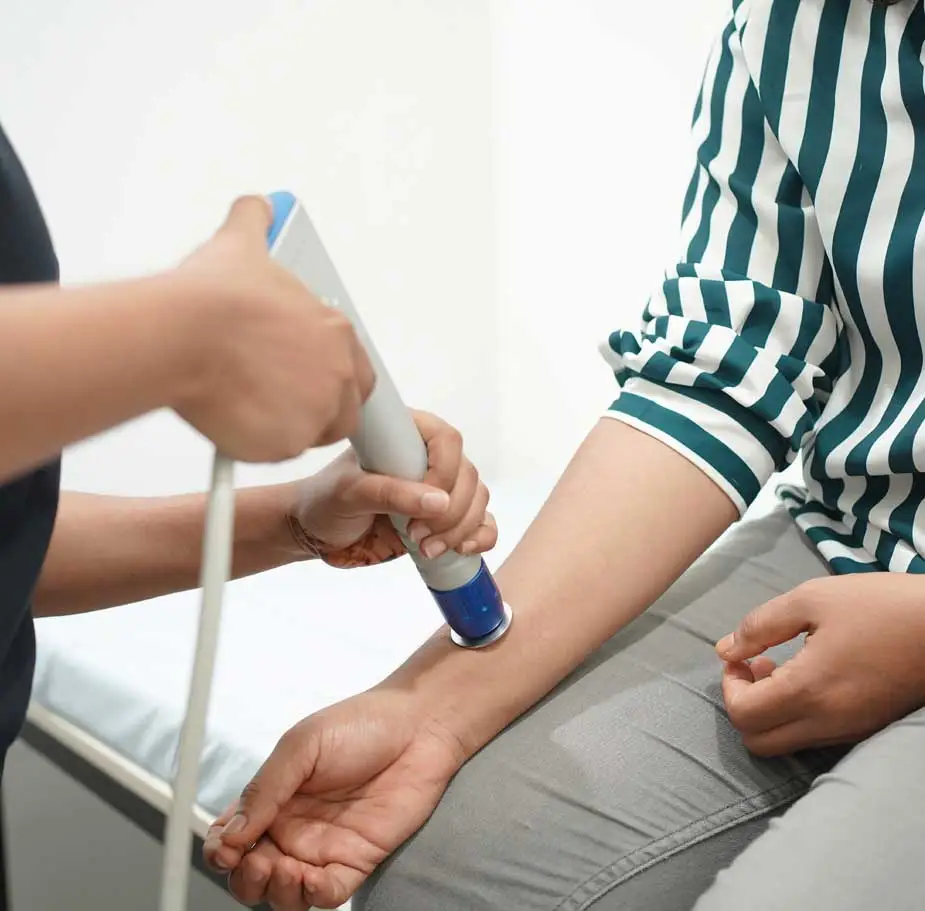Tennis Elbow
Symptoms
Symptoms of tennis elbow may include:
Pain on movement
Reduced range of motion
Pain on palpation
Inflammation
Pain at rest, night pain and daily activities
Causes
The causes of tennis elbow include:
Diagnosis
Treatments
Rest and avoiding painful activities can relieve pain due to tennis elbow. Non- operative management of tennis elbow is typical, it involves relieving pain and controlling inflammation. Elevation of the affected area and icing can help reduce inflammation. Elbow brace can also use to limit the movements. Patient education is also important for pain management. Modalities like IFT, US, TENS and Shockwave are used for pain management. Once the pain got subsided, we can start with proper exercise program and manual therapy techniques.
Our Musculoskeletal Wellness Program uses Shockwave Therapy (ESWT) is an advanced modality for the treatment of musculoskeletal conditions and it’s the most effective treatment for tennis elbow or lateral epicondylitis. ESWT uses sound waves (high amplitude pulses of mechanical energy) to breakup infected tissues and stimulate the healing process. The energy triggers the regeneration and reparative processes of the bones, tendons and other soft tissues. ESWT is used to treat chronic, sub-acute and acute conditions. After the shockwave session, Cryotherapy is advised to avoid muscle soreness.

Elements of Musculoskeletal Wellness Program
Extracorporeal Shockwave
Pulsed Cell Repair
Electrotherapy & Pain management
Exercises
Nutrition & Diet Management
Lifestyle Management
Ergonomics Guidance
Get a Quick Reply Here
Office
Monday to Saturday: 8:30am – 6pm
